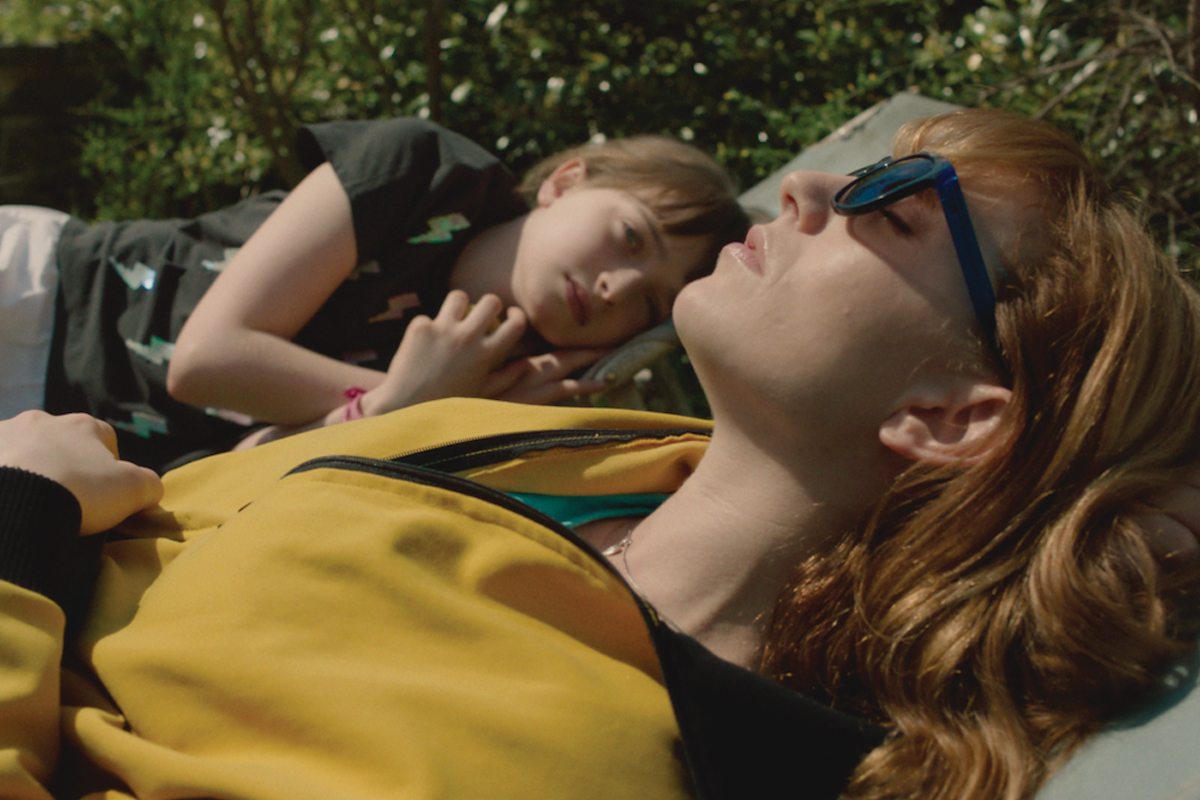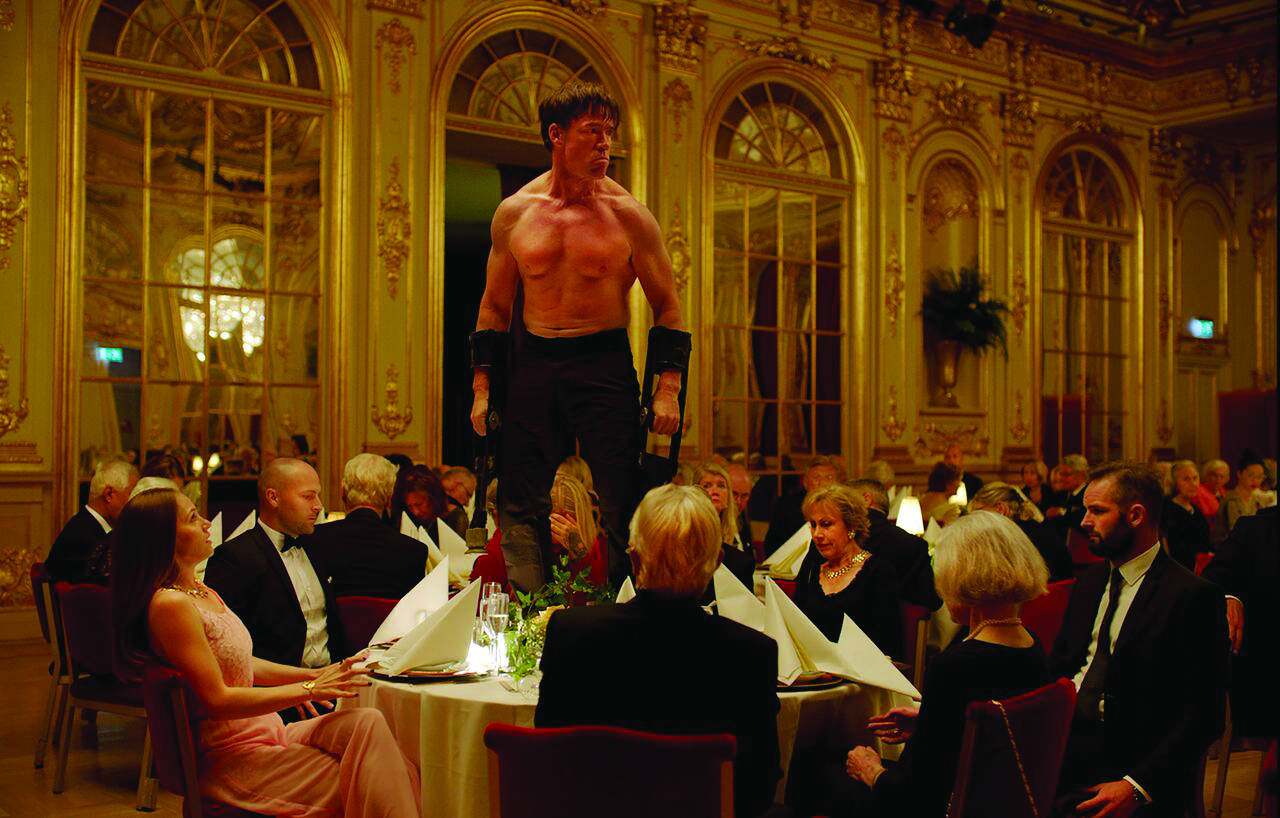Chicago International Film Festival Report
October 15, 2017
Editor’s note: As part of their 2017/2018 Roger Ebert Fellowship, The Daily Illini staff members Madeline Galassi, Niani Scott and Tyler Panlilio covered the opening weekend of the Chicago International Film Festival. Their reports include a feature on Luxembourg’s foreign-language Academy Award’s entry,“Barrage”; an interview with Terry Notary, a motion-capture expert from“Avatar” and “Planet of the Apes,” and the Chicago-set independent project “Blueprint.”
The festival, now in its 53rd year, continues through October 26 at AMC River East on 322 E. Illinois St., Chicago. More information can be found at chicagofilmfestival.com.

Photo courtesy of Chicago International Film Festival
Isabelle Huppert and Themis Pauwels in “Barrage” at the Chicago International Film Festival
Get The Daily Illini in your inbox!
“Barrage”: Throw the men in the trash
Telling a story about three generations of women and their turmoil, “Barrage” portrays the battles and victories that come with human nature.
The French film, a co-production of Luxembourg, Belgium and France, stars Isabelle Huppert as Elisabeth. Her daughter, Catherine, is played by Huppert’s real daughter, Lolita Chammah. After being estranged for ten years, she returns to form a relationship with her daughter, who she left in the care of her mother.
Directed and co-written by Laura Schroeder, “Barrage” concentrates entirely on the relationships between the three women. The absence of men wasn’t Schroeder’s intent when the writing process began. Focusing on women, however, was the priority.
“All of my films have always had women in the center, probably because I am a woman and I feel like I can express myself better through thinking of women,” Schroeder said in an interview outside one of the AMC River East theaters after the“Barrage” screening. “The presence of men was important in an earlier writing stage, but then we felt that it was really important to focus on those three characters and especially on the main character.”
From there, Schroeder said they threw the male characters in the garbage, one after the other.
Catherine and Alba rekindle in the family’s lakeside chalet after she kidnaps her from Elisabeth. Their isolation lets the audience focus on the characters’ interactions without any distraction. Schroeder and her co-writer, Marie Nimier, worked on the script in two separate stays at the lake where“Barrage” was later filmed.
“It’s really helpful because you can write and see your location at the same time,” said Schroeder.
Much of the characters’ history is left unknown to the audience. Schroeder wanted the story to focus on the present, thus avoiding explaining too much of the character’s history with one another. She wanted to avoid, in her words,“too many explanations and that was one of the challenges in writing, in knowing exactly how much information you needed in the backstory. And all the rest that you didn’t, I wanted to keep out.”
Having a biological mother and daughter playing Elisabeth and Catherine wasn’t a part of Schroeder’s vision when she began writing the story. However, once the actresses were cast, she found inspiration in Huppert’s relationship with her daughter.
“I think if it wouldn’t have been those two, it would have been a very different film and a very different relationship between those two characters,” explained Schroeder. “There’s a beauty in it and there’s something that comes out beyond what has been written.”
Tennis is a substantial part of all of three of the women’s lives. Elisabeth pushes both Catherine and Alba in their training, which is a struggle for both characters and poses as a metaphor for their relationships.
“I feel like tennis more than other sports is about the player,” said Schroeder. “The player is somehow his own opponent, and it’s always a struggle against yourself before it becomes a struggle against your opponent on the other side of the net.”
After the second “Barrage” screening opening weekend, several audience members expressed their appreciation to Schroeder after the post-screening discussion. One man interrupted our interview to tell Schroeder: “Many stories about women are about their relationship with men and responding to men, or how they are in relation to a man. It’s wonderful to see a story of three generations of women and how they all related to each other. So I wanted to thank you for that.”
Schroeder nodded in appreciation.
“Barrage” screens one more time, noon Tuesday Oct. 17, during the Chicago International Film Festival.

Photo courtesy of Chicago International Film Festival
Terry Notary in “The Square” at the Chicago International Film Festival
“The Square”: The savage is loose
For Terry Notary, motion capture is second nature. In addition to being a movement coach and stunt coordinator, the California native has appeared in all three “Planet of The Apes” reboots, “The Hobbit” series and “Kong: Skull Island.”
But he rarely, if ever, appears on screen as himself. As a “mo-cap” specialist, Notary performs in a special suit equipped with motion sensors, also known as trackers. His movements and facial expressions are then digitally animated.
Notary turns heads in Ruben Östlund’s latest film, “The Square,” a Swedish-German-French coproduction, and for good reason. While the film hysterically emphasizes modern art and media, there’s no motion capture involved here — just raw acting ability.
Set in Stockholm, “The Square” follows Christian, a contemporary art museum curator and his outlandish search for his stolen possessions after being pickpocketed on the street. Along the way, the film illustrates all walks of life, from homeless beggar to prestigious celebrity.
Notary’s show-stealing performance isn’t featured until the last fourth of the film. He signals the crucial mood shift as Oleg, who appears earlier in the film as part of the museum video installation. He’s the featured entertainment at a fancy museum dinner party. This becomes one of the most uncomfortable experiences in modern cinema. An announcer tells the crowd: Welcome to the jungle! Then Notary appears, walking on all fours, an ape in human form. He intimidates lesser males out of the ballroom, and at one point, drags a female guest by her hair. Östlund and Notary want you to remember this scene. And you will.
“Playing as an ape is exactly what you don’t want to do,” Notary told me after the Chicago film festival screening, at the bar outside the third-floor theater. “You don’t want to play in ape, you want to drop into a deep, deep part of yourself. And when you sort of shed all the bull—- — sorry for my language — you take [away] all the crap, all the superfluous stuff, all the pretense, all the social life, conditioning, sense of self and the identity you have about you are.”
And although it’s just Notary with his shirt off, his technique still shines. The camera focuses on his back muscles as he walks on all fours. The entire crowd is silent as he grunts and shouts. Östlund crafts this scene as something beautifully disturbing.
“Reuben is a special director,” the performer said. “He is an observer of life, he likes to look at life through the eyes of a child and with a little sense of humor. And he likes to say, ‘Look at us! Look at how we are. Isn’t this ridiculous? Let’s all laugh at ourselves a little bit, together.’ And he presents situations that allow you to go ‘That is ridiculous, but that is exactly what I would do!’ And it takes everyday things and he put a different lens on it so that you can actually see it, and see it in a way that is self-reflective.”
“The Square” opens in various U.S. cities starting on Oct. 27.

Photo courtesy of Chicago International Film Festival
Jerod Haynes and his daughter Jalaiya Lee-Haynes in “Blueprint” at the Chicago International Film Festival
“Blueprint”: South Side Chicago Family Affair
Filmed on Chicago’s south side, “Blueprint” tells the story of Jerod, an African-American man who loses his job, girlfriend and best friend. Poverty-stricken and suffering from alcoholism, Jerod does not know what direction his life is taking him; as the character points out, there is no blueprint.
Director and co-writer Daryl Wein’s film attempts to heighten the realism of its characters by not using a conventional script. The improvised film used four professional actors; the rest of the cast being family and friends of Jerod, whose real name is Jerod Haynes. Jerod’s mother and daughter, Jalaiya Lee-Haynes and Sandra Adams-Monegain, are his mother and daughter in real life.
“The film came out of conversations,” said Wein, in an interview after the Saturday showing at the Chicago film festival screening in downtown Chicago. In the film, Reggie, Jerod’s best friend, is shot to death by a law enforcement officer. “(That’s) representative of every black man that’s killed by the police,” he said.
“Blueprint” shows real-life scenarios in the black community. Police brutality, poverty, alcoholism, and relationships are all current pressing issues. The open-endedness of the film is relatable, because there are no definite answers to these issues.
The film addresses methods of coping with issues by alcohol abuse and cigarette consumption. The actors smoke throughout the film. “And I don’t smoke,” actor and co-writer, Jerod Haynes told me. “After we got done filming, it took me a while to kick it.”
Added Wein: “It’s like self-medication. It’s a way to just numb yourself and that’s what his character is going through. He’s trying to not deal with the pain directly, that’s why he’s drinking away his sorrows and pains. The smoking is just an extension of that.”
During the Q&A, Haynes was asked about commenting on the constant state of terror throughout the film, and the threat of violence on all sides of his character’s life.
“I believe a man’s identity is tied to work. If a man is depressed it’s probably because he’s not working. That’s a spiral effect. Now, I am trying to climb out of the gutter. That’s what a lot of men go through. The problem is we don’t go see anybody. We don’t talk to anybody about this. We don’t see therapists. In the black culture, a lot of us think going to see a therapist is crazy. ‘You’re telling somebody your problems?’ A lot of us carry those burdens and pains.”
Half of us, the “Blueprint” star said, “are walking around with PTSD, if we want to keep it real. A lot of us don’t know how to deal with that s—. We’re just walking around with it.”
“Blueprint” screens one more time, 1:30 p.m. Wednesday Oct. 18, during the Chicago International Film Festival.






